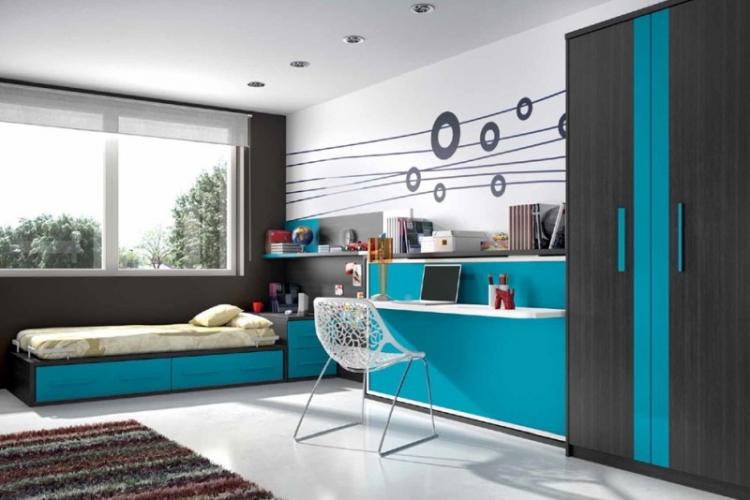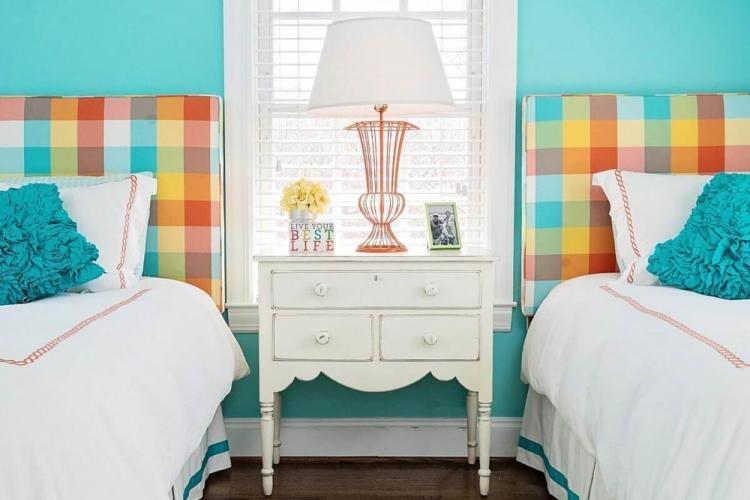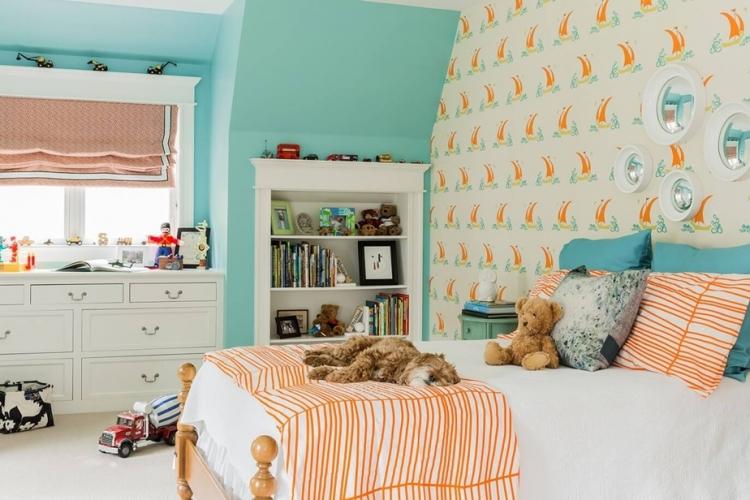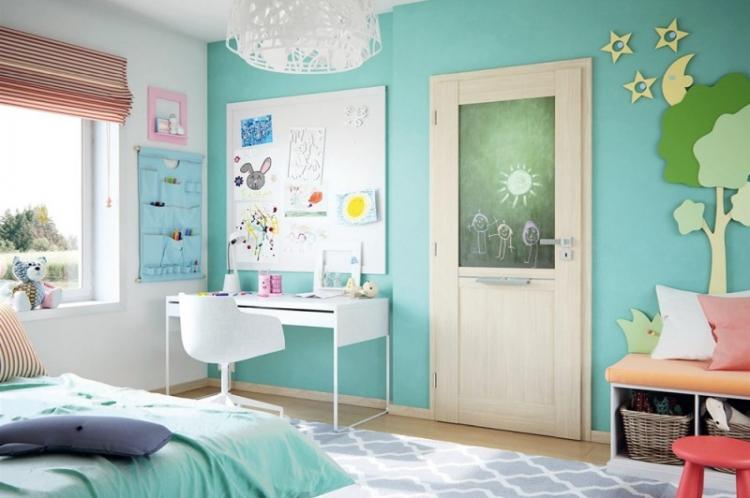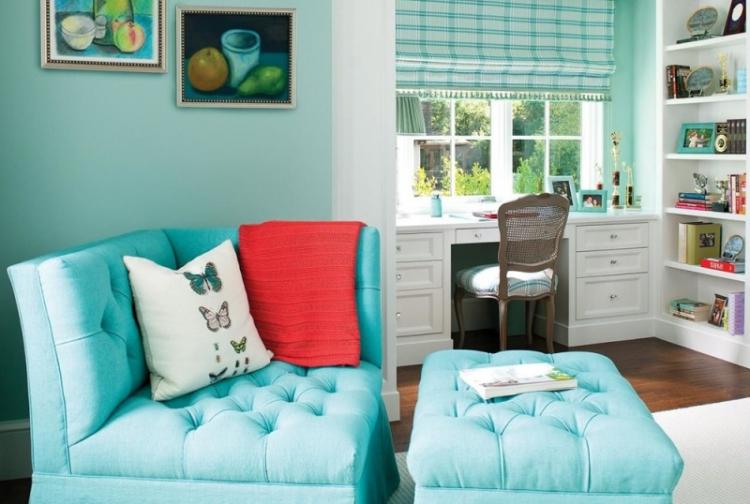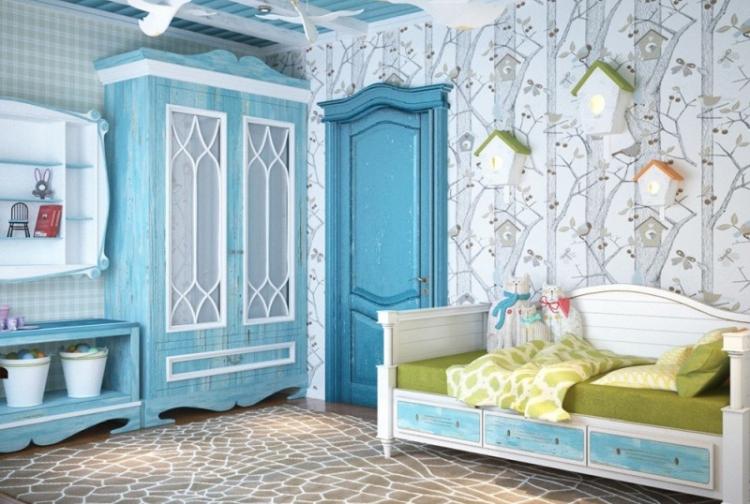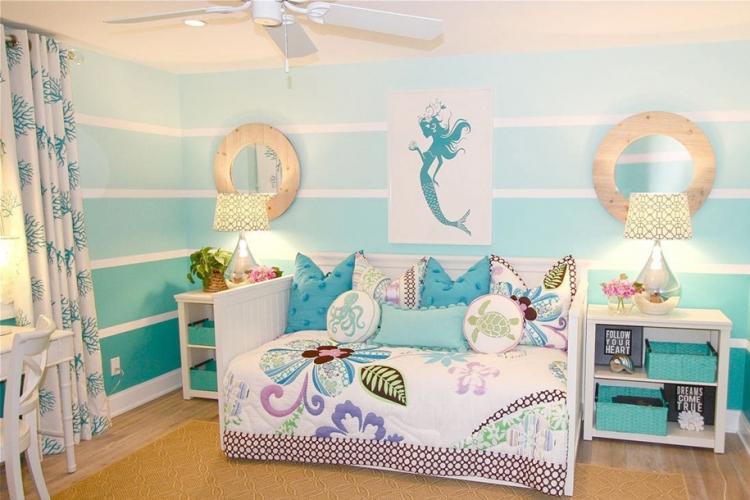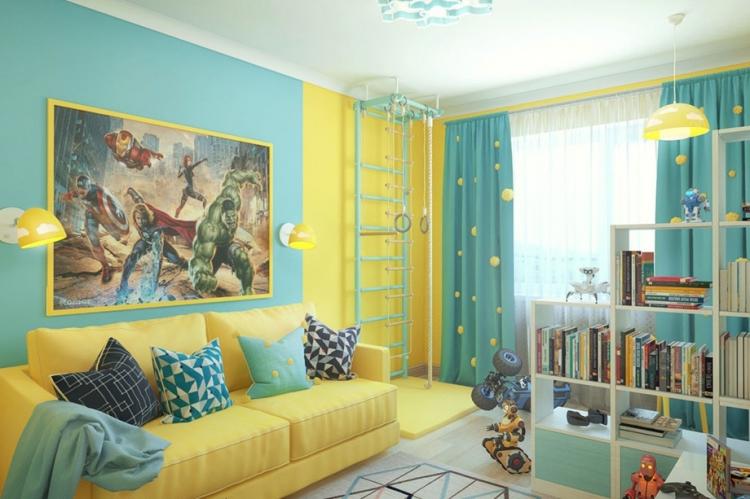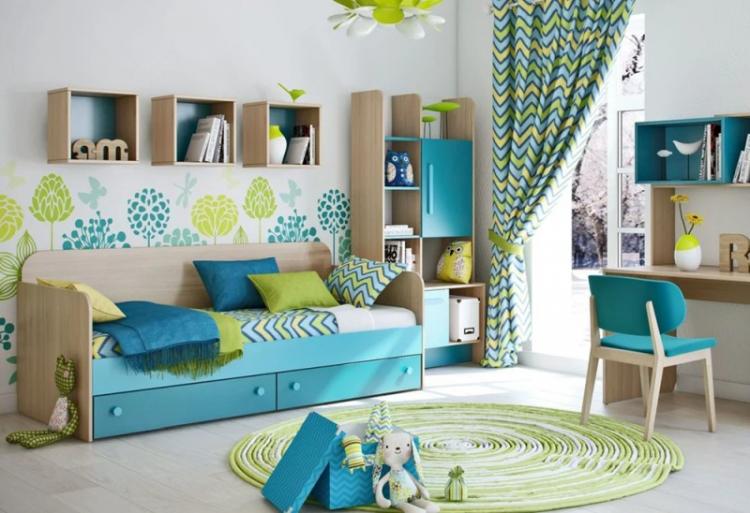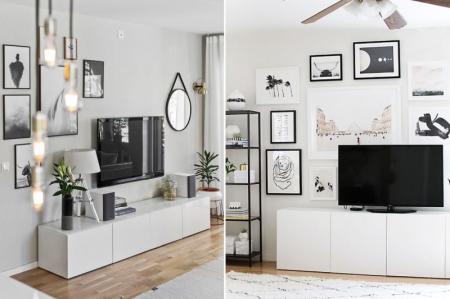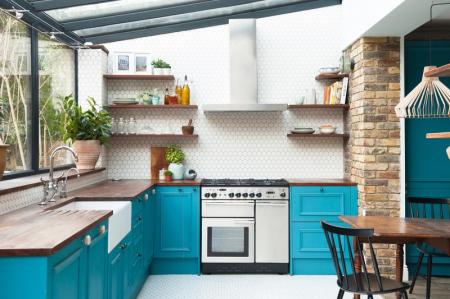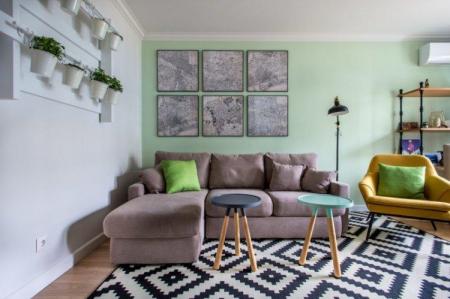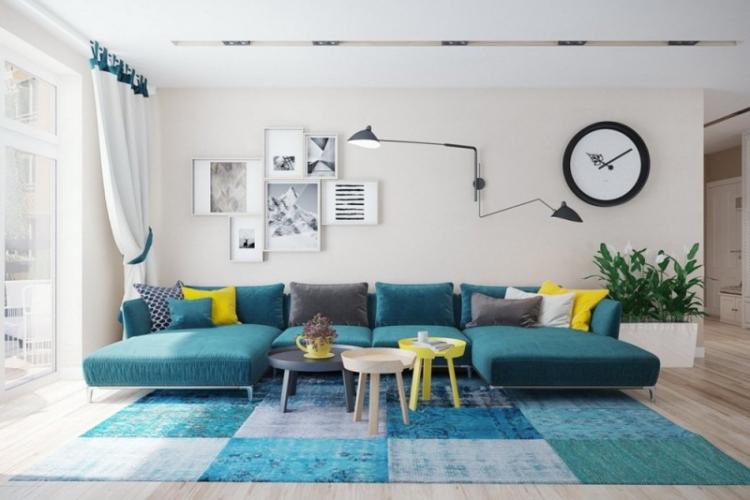
Boring monotonous shades have been out of fashion for several seasons. Complex multifaceted colors come to the fore, which play completely differently in each interior. Including elegant turquoise in all its diversity from delicate pastel to dirty dark. Do you want something bright, but still elegant and not too flashy? Then the turquoise color in the interior was created just for you!
Features and influence of turquoise color
Turquoise, in honor of which the eponymous shade got its name, for several millennia was considered a talisman of good luck in European culture. The ancient Egyptians encrusted the tombs of the pharaohs with it, and the Persians wore it as a protective amulet against premature death.
The turquoise color has absorbed all the richness of colors of natural material: bright, with greenish and azure tints. In Feng Shui philosophy, it is a symbol of purity and intuition, but at the same time - luxury and wealth. It is believed to attract success and wealth to the home.
It's no secret that shades of blue and green have a beneficial effect on the human psyche. They soothe, help to relax, escape from worries and relax. It is a good choice for people with constant stress, irritability and fatigue.
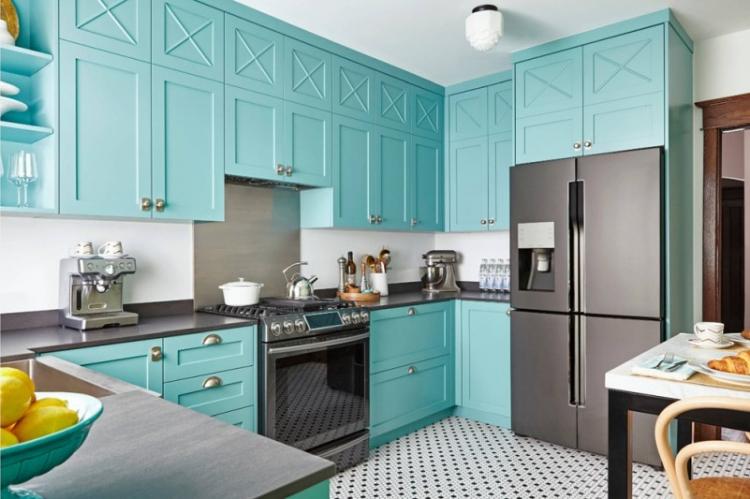
At the same time, turquoise helps to focus, but this calm and restrained concentration is akin to meditation. It stimulates inspiration and promotes the development of imagination, so it is not in vain that creative individuals appreciate it.
Chromotherapy is a direction that studies the effect of color on a person's condition. In it, turquoise is responsible for the normalization and support of the entire immune system. And in combination with white and purple, it contributes to the development of mental abilities.
If the room faces the sunny side, the cold turquoise color in the interior will give a feeling of coolness and lightness even on the hottest day. But in dark northern rooms, dilute it with warm or bright accents.
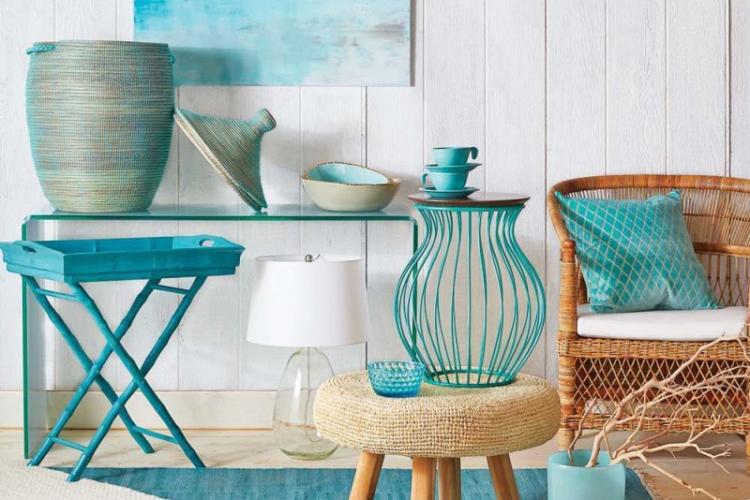
Color combinations
With its brightness, the turquoise color remains natural, and natural shades are most easily combined with any other color. So feel free to use the principle of neighboring tones, contrasts or all the variants of the elegant classics.
Turquoise with white
The simplest and most obvious solution is turquoise on a calm and neutral white background. This tandem creates a feeling of freshness, lightness, airiness and purity. And to avoid excessive sterility, dilute it with warm or bright colors.
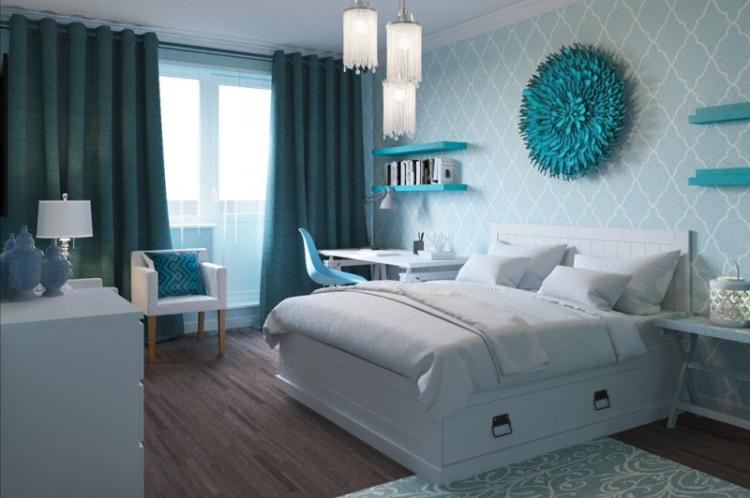
Turquoise with beige
Turquoise is softly and elegantly combined with delicate warm shades of beige, cream and ivory. Pastel combinations are good for Provence, while more contrasting combinations are good for modern Scandinavian interiors with bright details.
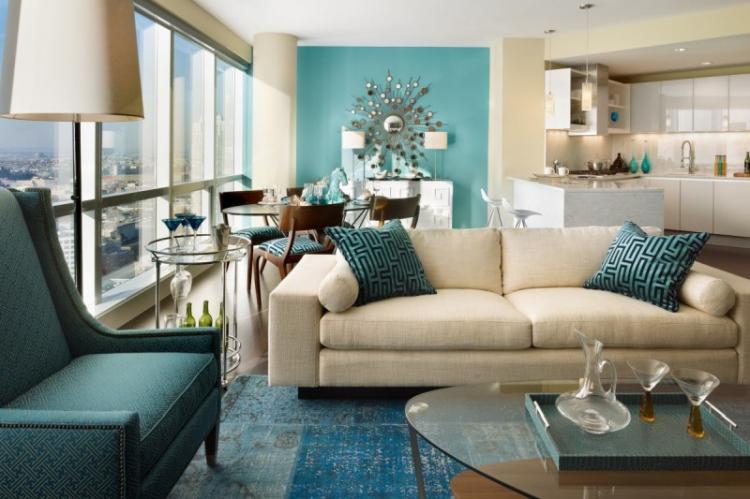
Turquoise with gray
Intense turquoise with cool steel or graphite gray looks surprisingly futuristic. Such a combination in glossy or metallic will fit into the cool and original hi-tech. Such interiors look especially fresh in the kitchen or bathroom.
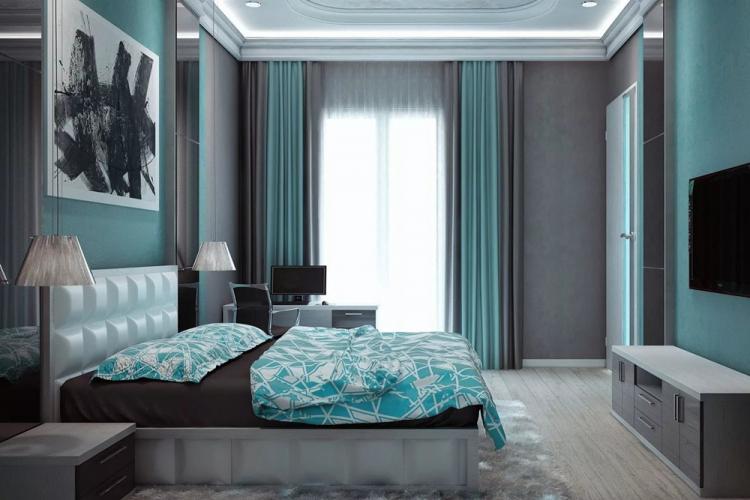
Turquoise with brown
The simplest and most traditional combination with chocolate and coffee shades harmoniously fits into classic interiors or Mediterranean style. Bright, juicy turquoise with dark wood with an expressive texture looks good. And delicate shades with light wood create light, airy and light interiors.
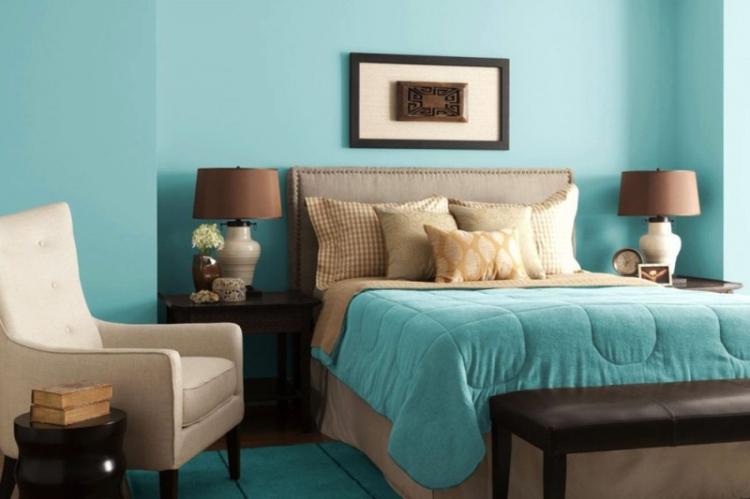
Turquoise with pink
The contrasting combination of red and blue is a real trend in recent seasons. Graceful turquoise is best in harmony with a delicate coral or salmon shade.The main thing is that the colors match in saturation - and then they will combine in an original and neat way.
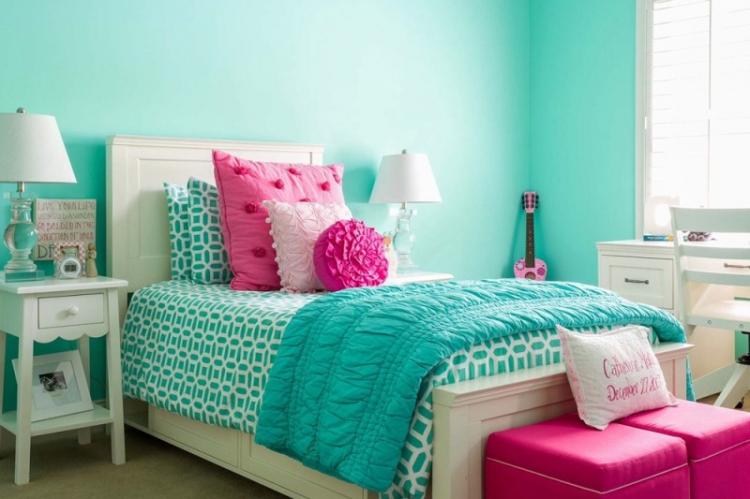
Turquoise with yellow
Another fresh and vibrant combination reminiscent of a cloudless sky and summer sun is turquoise and yellow. This duo invigorates, cheers up and creates a festive atmosphere in the room. Dark turquoise and mustard look noble and elegant in neoclassical or modern style. Turquoise with gold is one of the basic combinations in oriental and Arabian interiors.
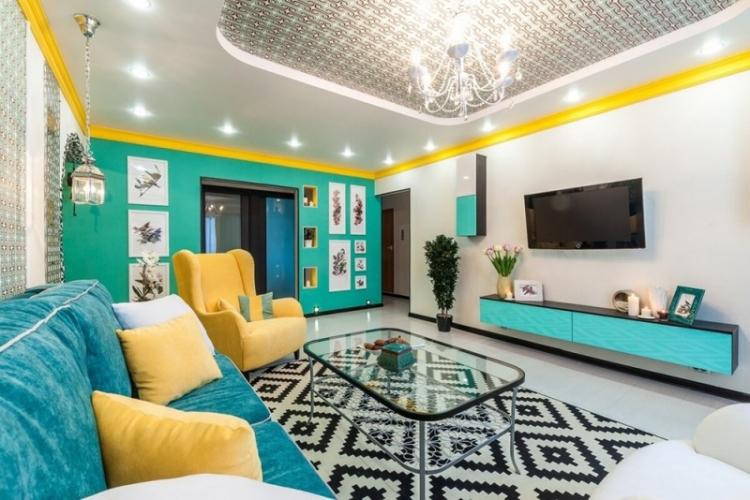
Turquoise with blue
The surrounding shades harmoniously complement each other, because in nature they go side by side. Turquoise and blue are the colors of the sea or sky, calm and creative at the same time. Depending on the saturation, the tandem will fit into any style, from strict classics to catchy pop art or artsy art nouveau.
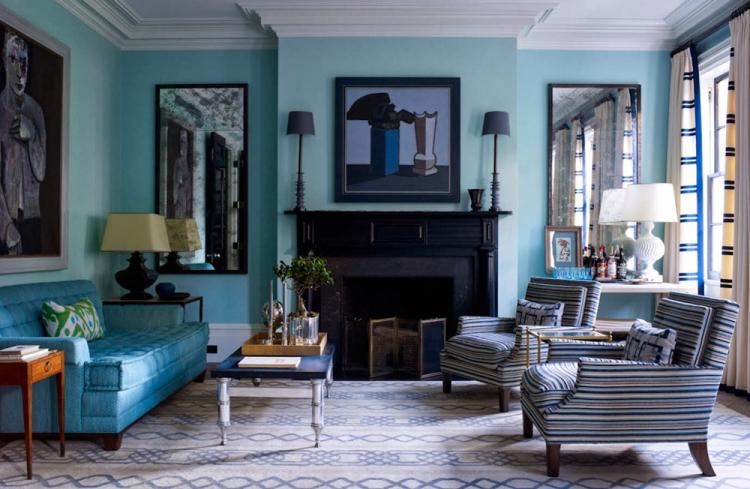
Turquoise with purple
One of the most extravagant combinations actually looks very organic if the depth is right. Saturated and dark tones look calm and noble, while bright neon and acid tones look kitschy and futuristic.
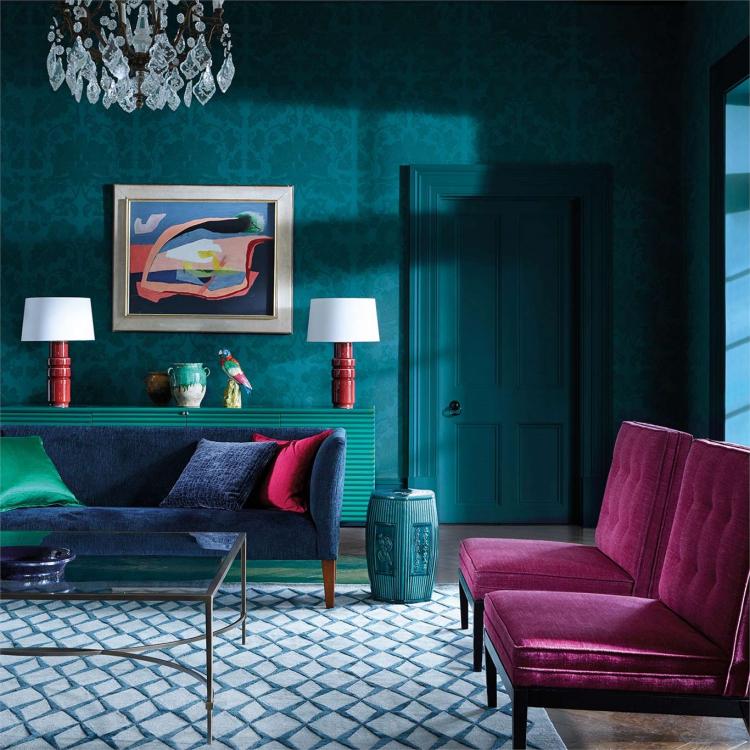
Turquoise color in interior design
By itself, turquoise is quite versatile, so it looks equally appropriate in the bathroom and in the bedroom. Everything is decided by color combinations, textures, materials and accents. We offer you several options for inspiration!
Turquoise color in the living room
Bright and active colors for the living room are a real find if you want to create a truly unusual and individual interior. Just don't forget about the calming and relaxing effect of turquoise. Perhaps its excess is not quite what you need for a room that is supposed to have fun with family and friends.
One accent turquoise wall, on the other hand, is a powerful tool for zoning and visually reshaping a space. A bright sofa will become an independent and independent accessory. Small decor, textiles, fancy figurines and frames with turquoise elements on a black and white background will complement Art Nouveau and Contemporary (contemporary style).
In the living room, you can safely use your favorite bright and juicy combinations that are not always appropriate in other rooms. For example, turquoise with yellow, red, purple, green or ultramarine.
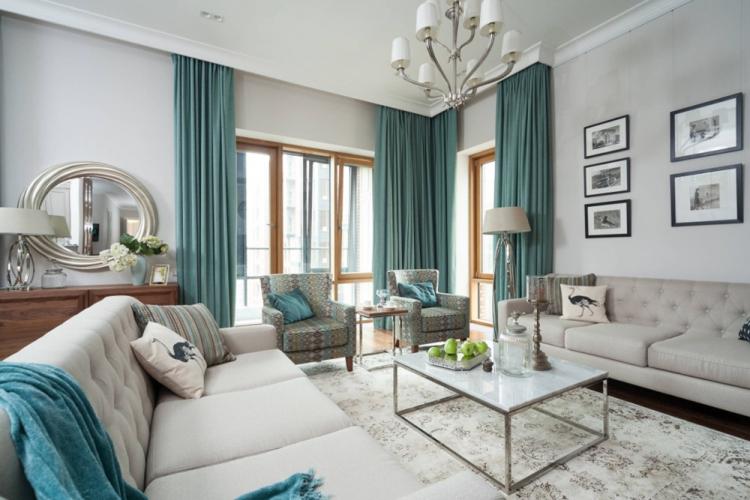
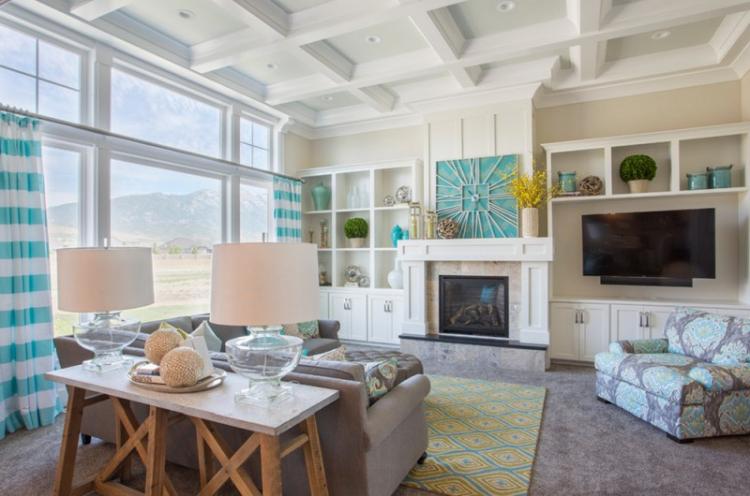
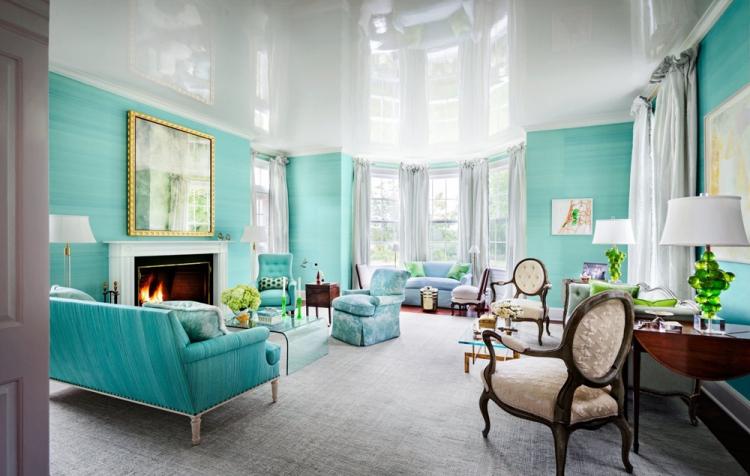
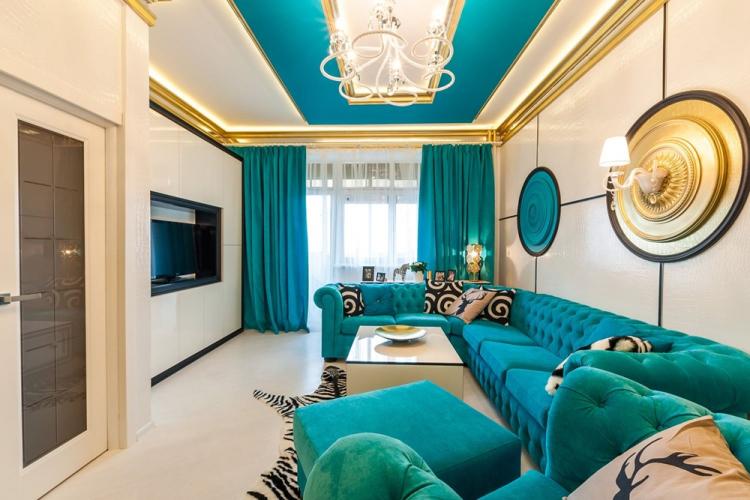
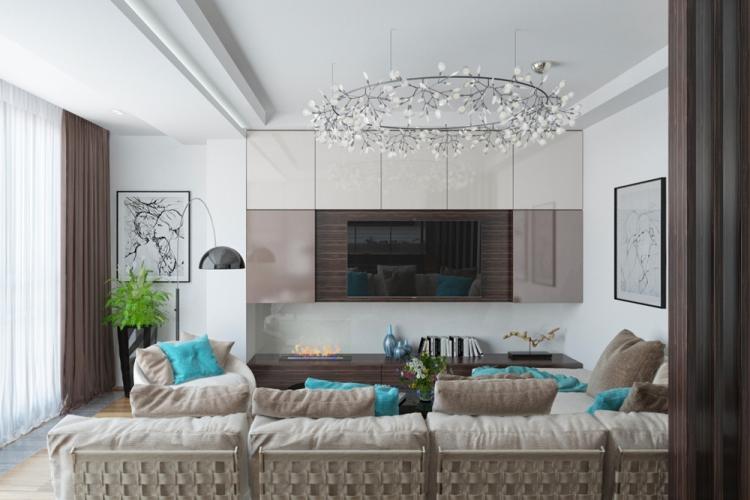

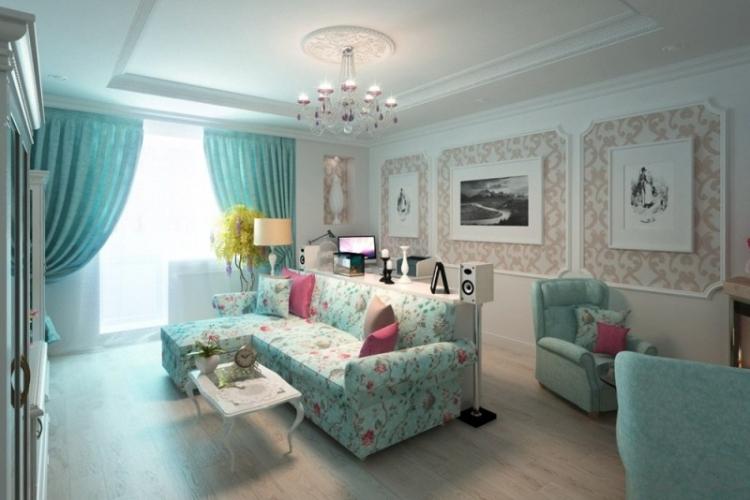
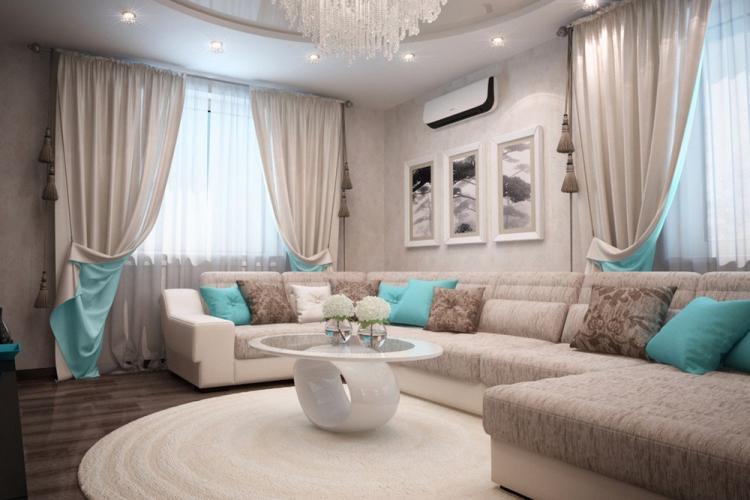
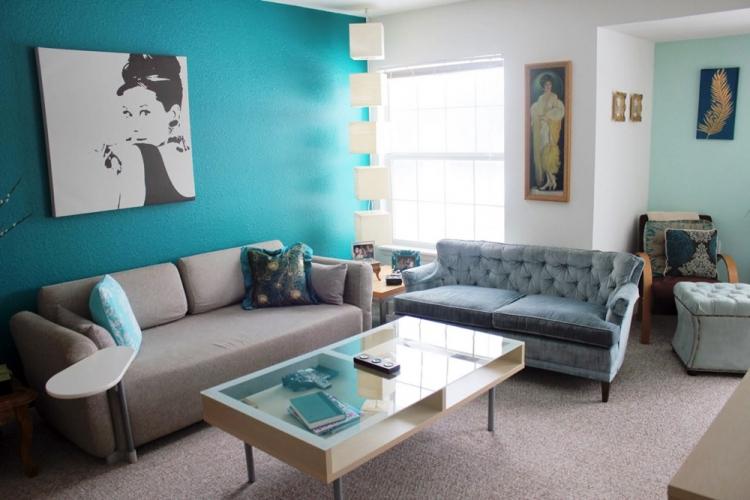
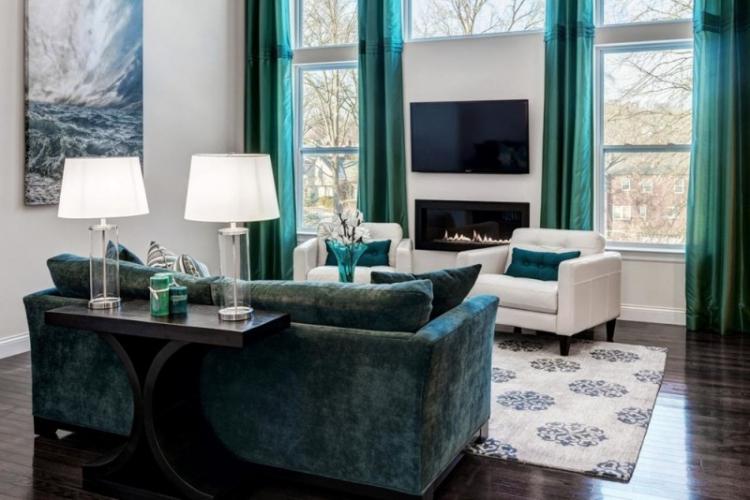
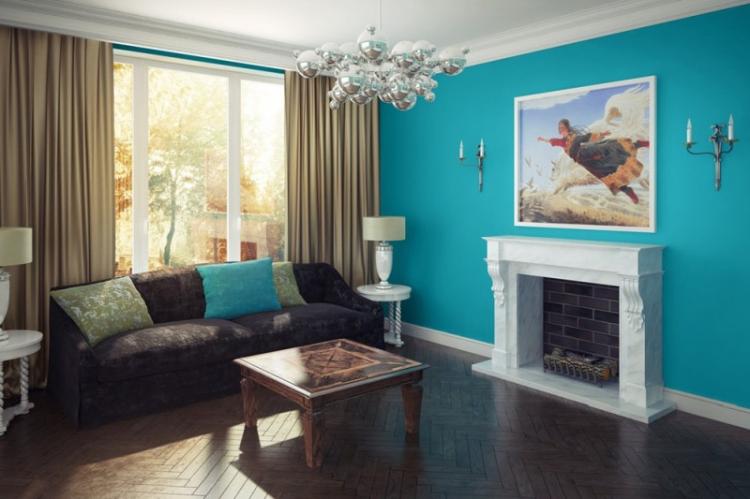
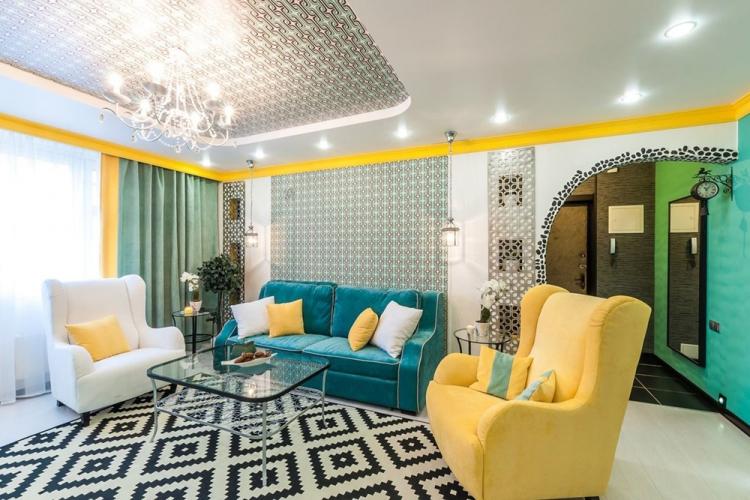
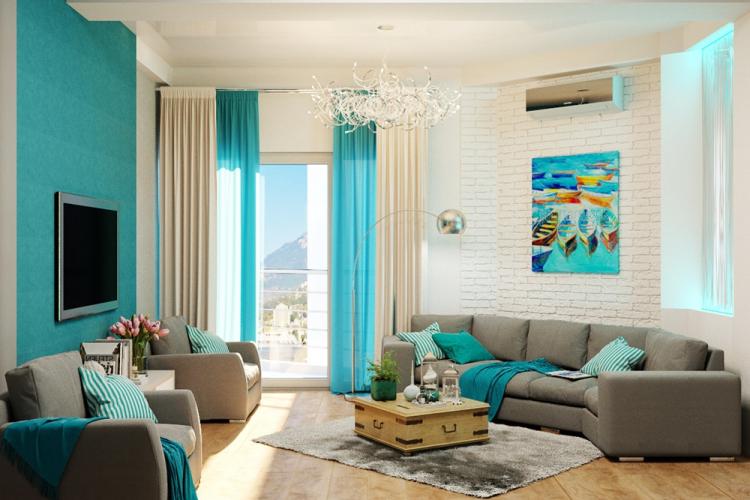
Turquoise color in the interior of the kitchen
The versatile turquoise color in the kitchen has two benefits: it is bright enough to invigorate during routine chores, and calm enough to allow you to relax at dinner.
The glossy turquoise kitchen fronts are the perfect complement to minimalism and other contemporary styles. Delicate pastel combinations with bleached wood and plant motifs are good for Provence, which is still popular in kitchen interiors.
Bright textiles are one of the most interesting and practical accessories in the kitchen. These can be curtains, tablecloths, napkins, potholders, decorative pillows and other useful little things. For example, turquoise with yellow or gold embroidery, tassels and underpants.
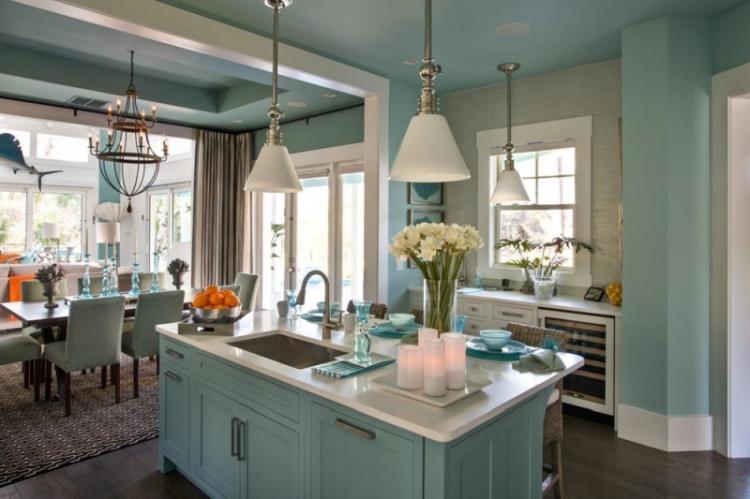
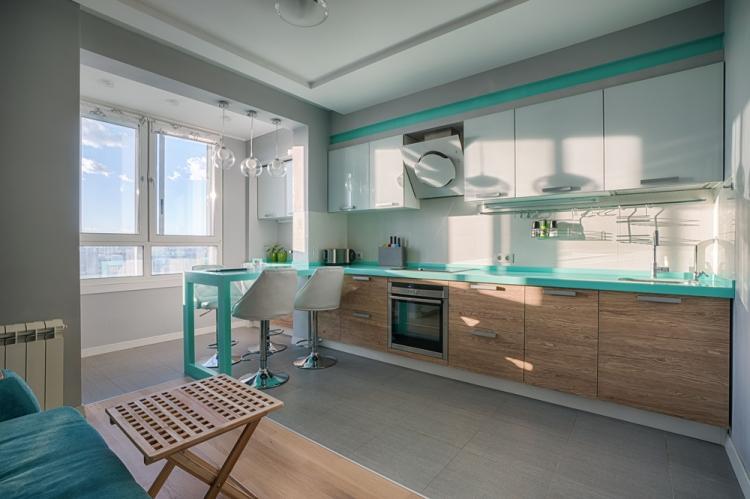
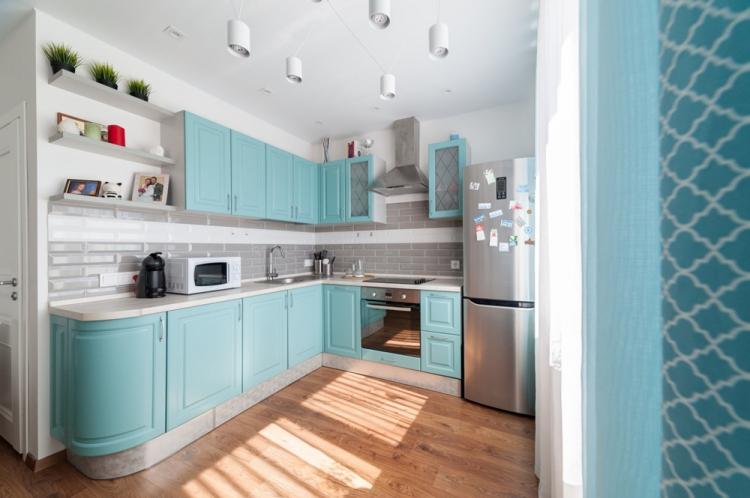
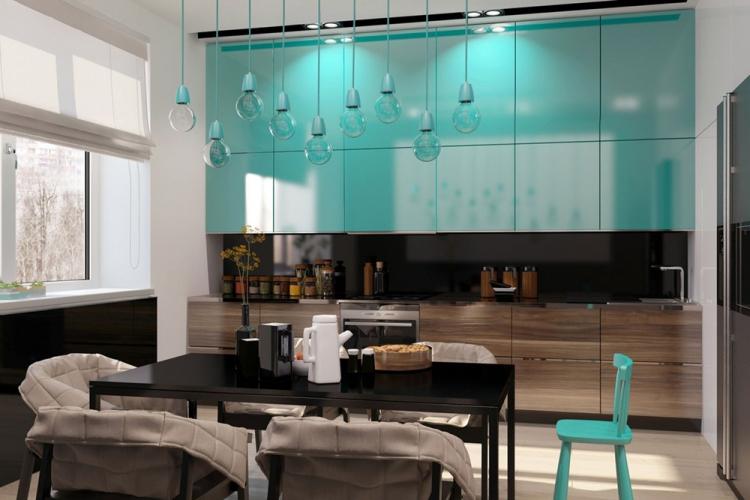

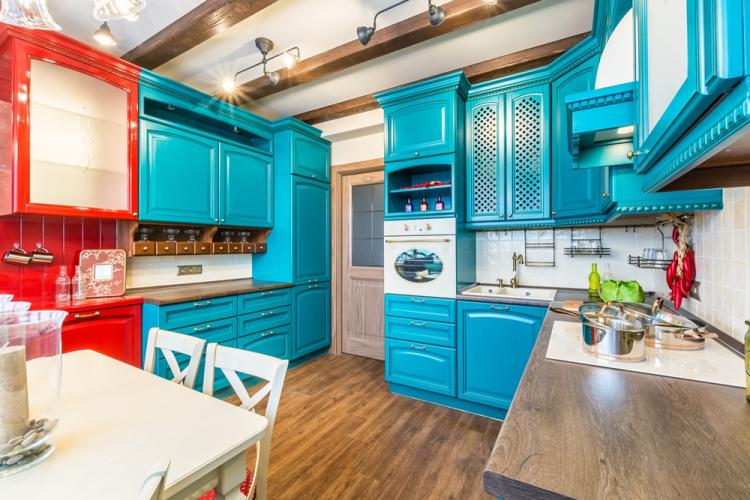
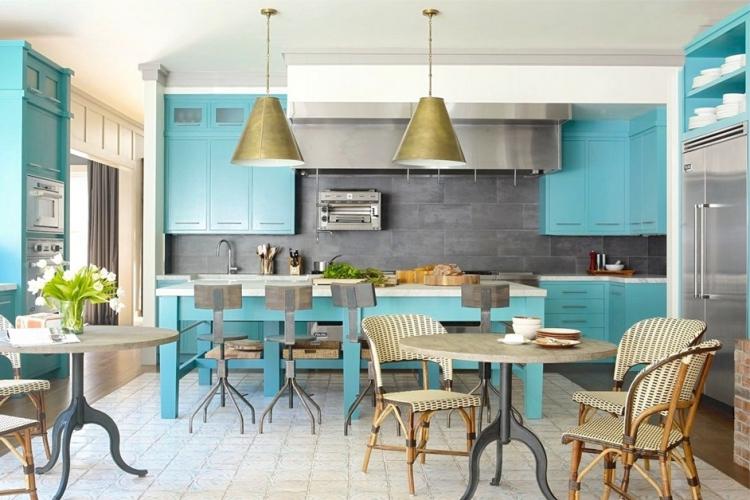
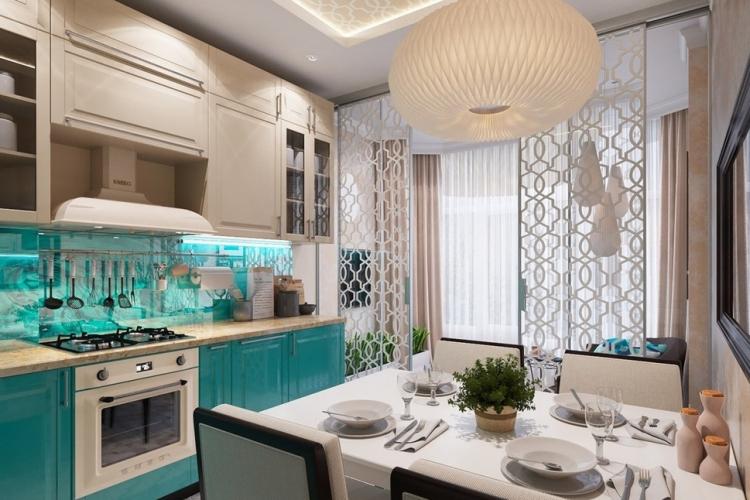
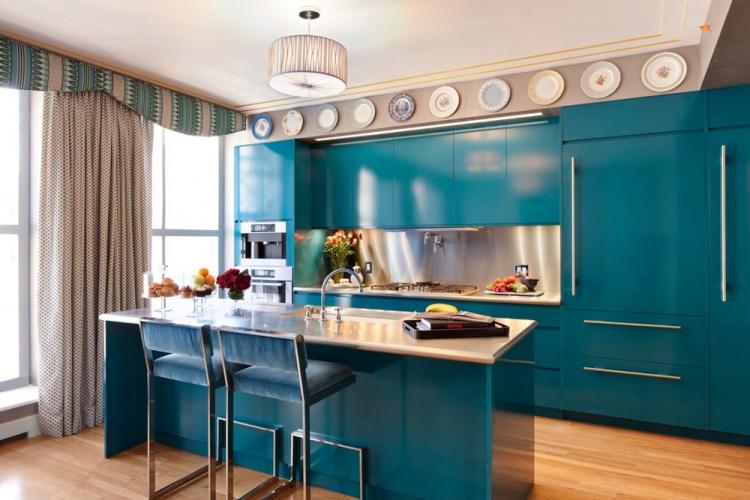

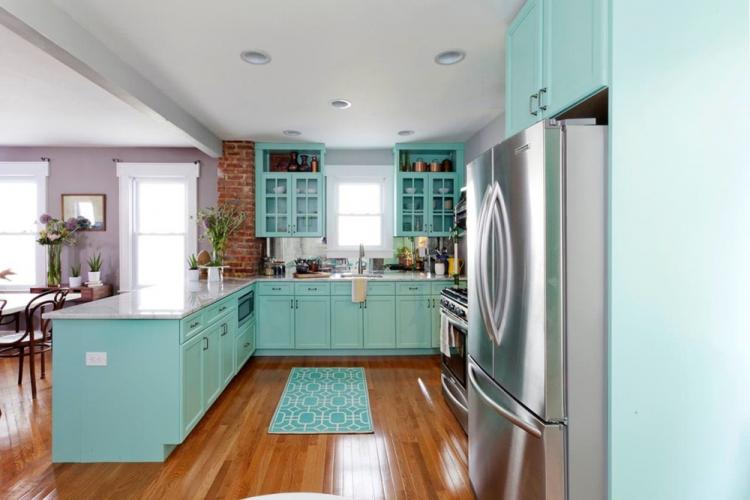
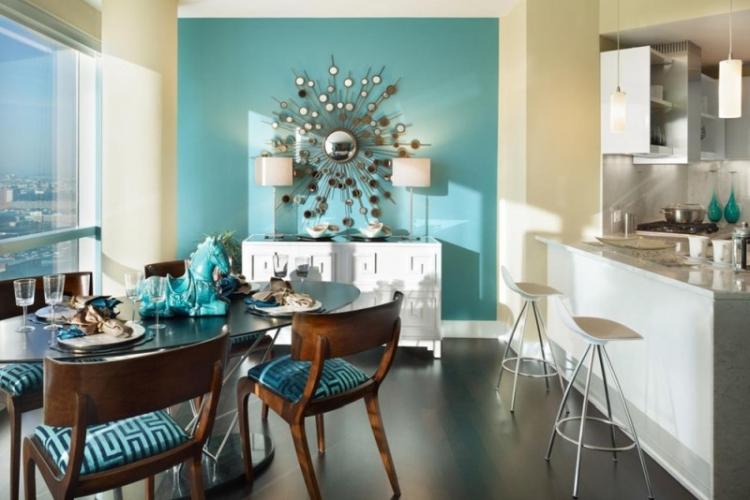
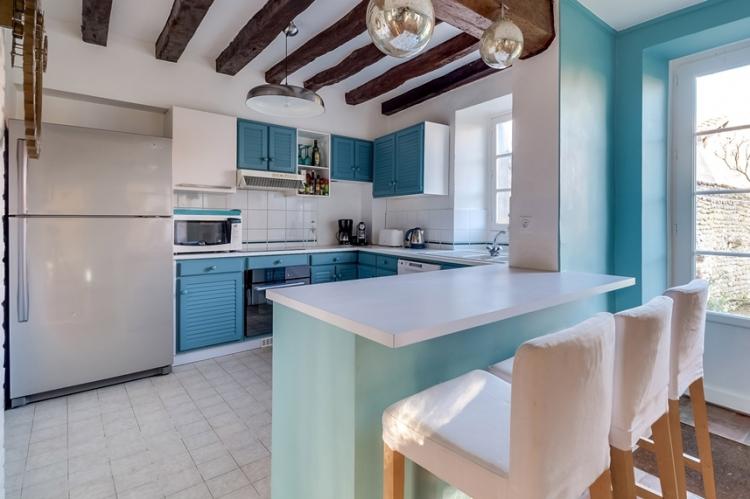
Turquoise color in the bedroom
Calm, balanced interiors are fundamentally important for the bedroom, because quality sleep is the key to health and well-being. Cool, muted shades of turquoise are great for these tasks.
If you want to paint the walls in turquoise, it is better to choose furniture and textiles more restrained: brown, beige, black and white. And bright pillows, bedspreads, curtains and panels diversify the existing strict decoration. Avoid completely monochromatic interiors, because even the calmest shade in this format looks heavier, and for a bedroom this is not the best choice.
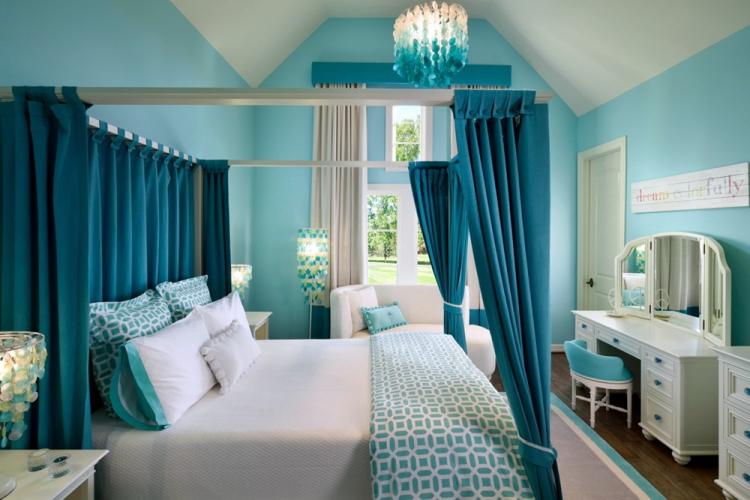
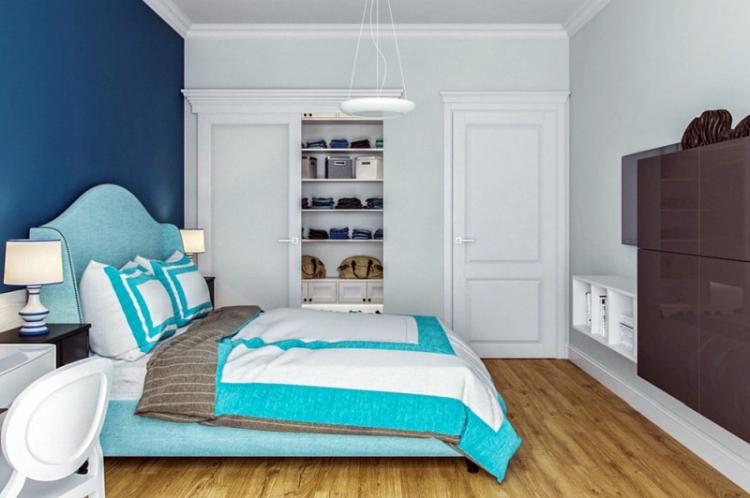
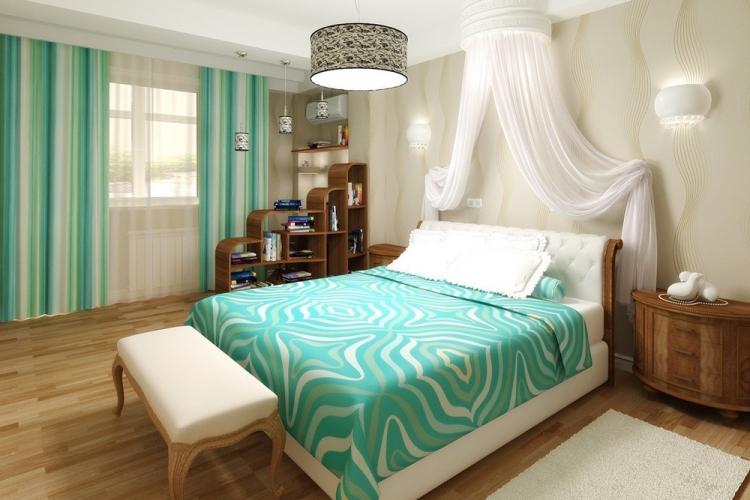
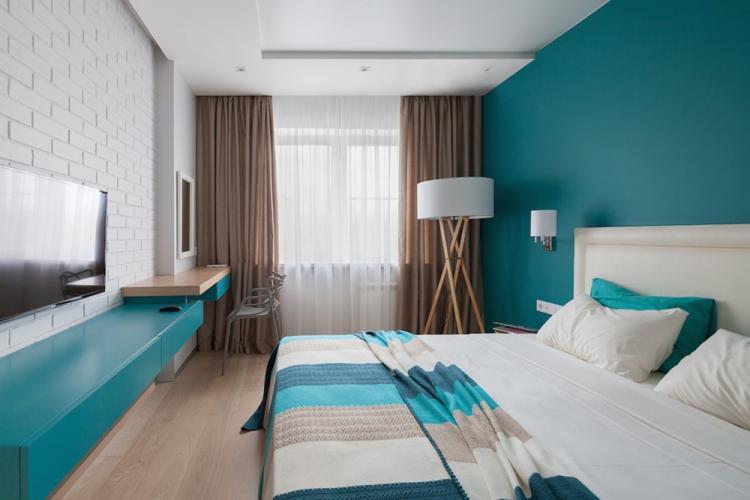
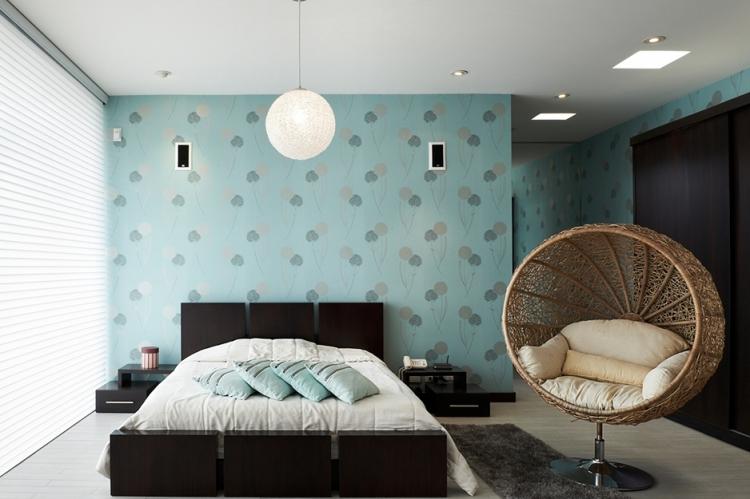
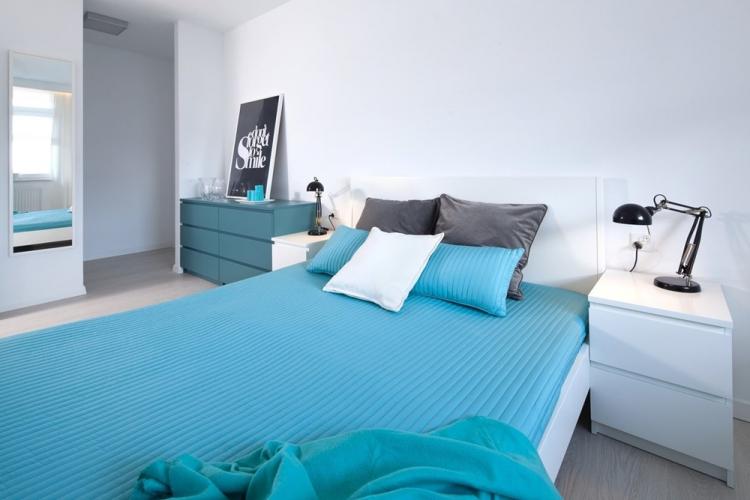
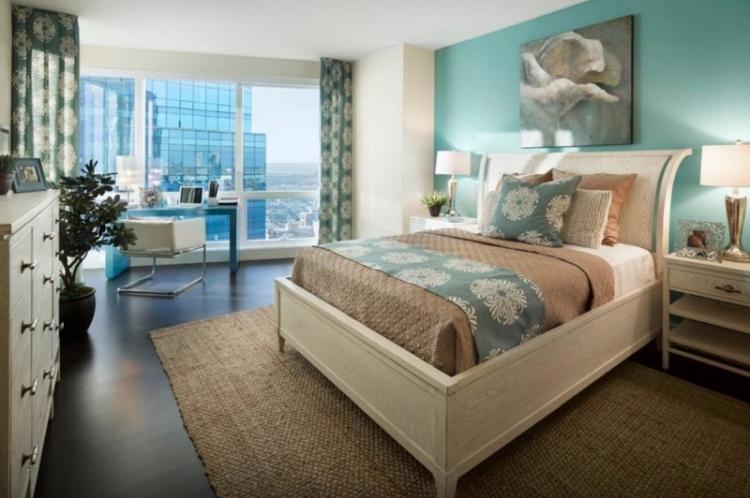

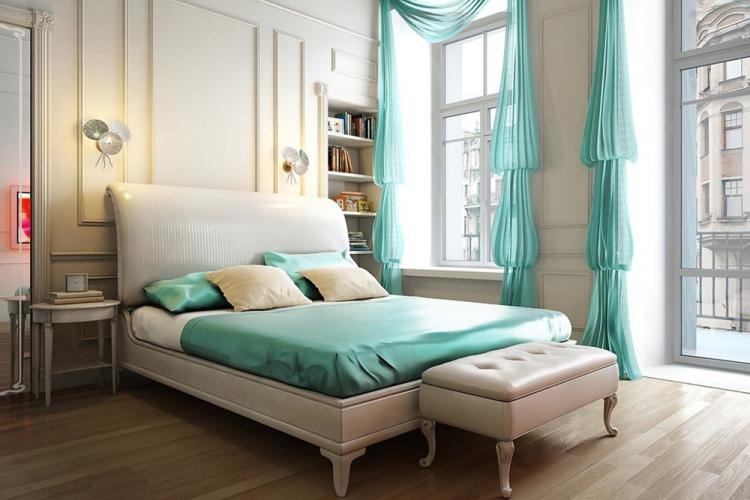
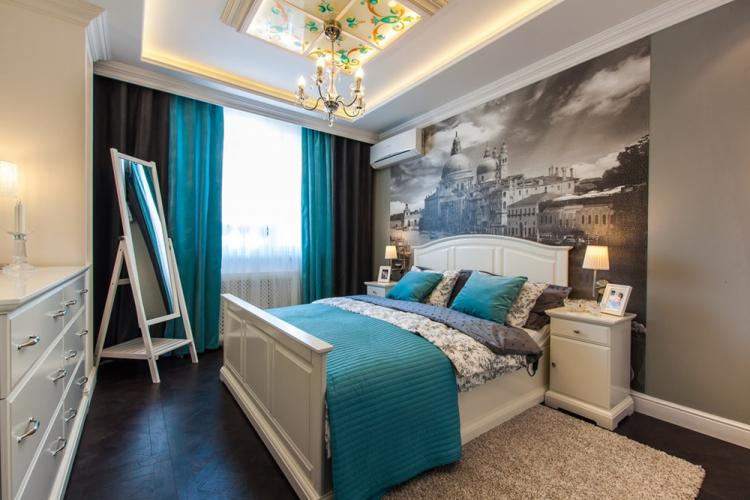
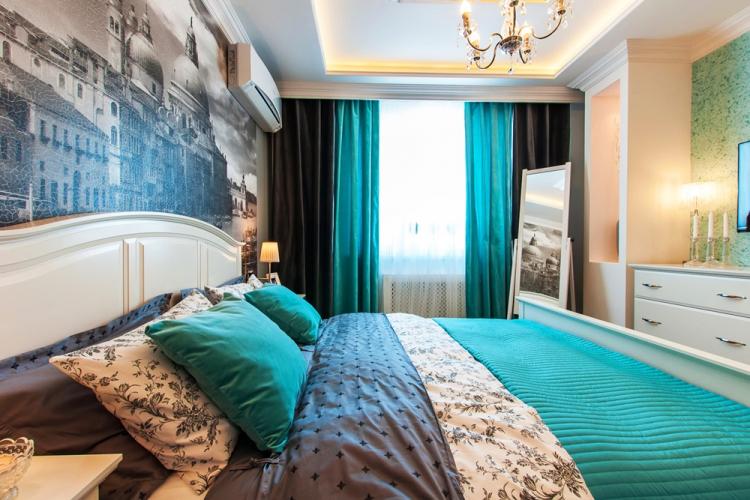
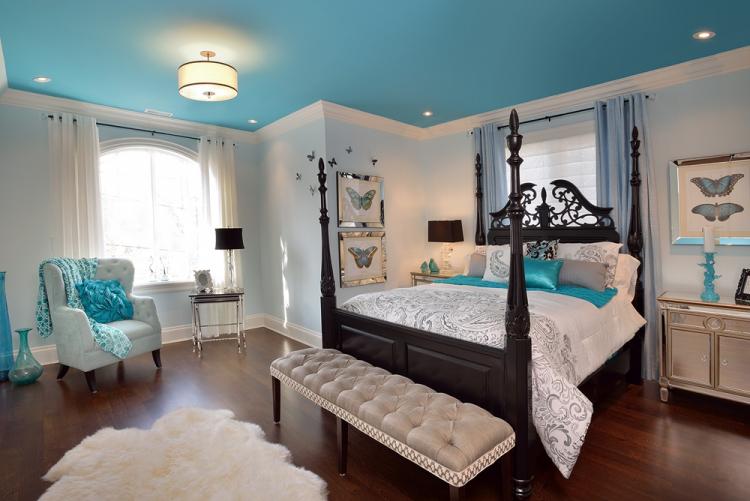
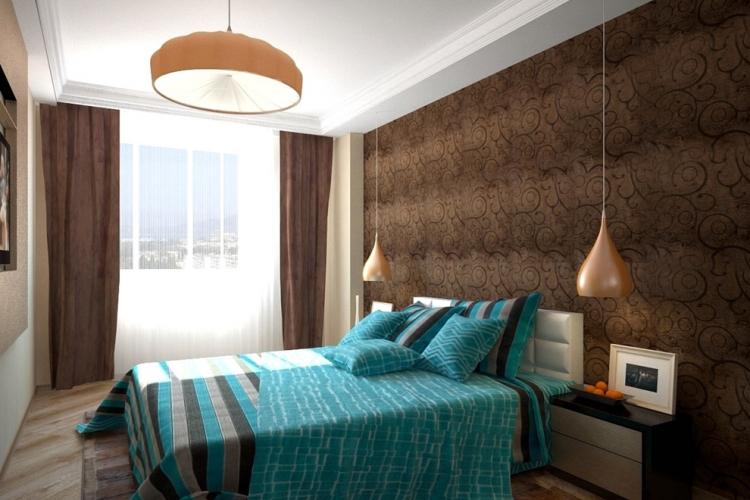
Turquoise color in the bathroom
Two common bathroom problems are lack of space and lack of light. Therefore, bright glossy surfaces with bright accents are always good here: for example, white sanitary ware and a suite against a turquoise wall.
If space permits, turquoise décor with black trim and trendy black fixtures is very elegant. And if you want something simpler, choose a patterned turquoise floor tile or assemble an unusual, chaotic mosaic around the bath itself.
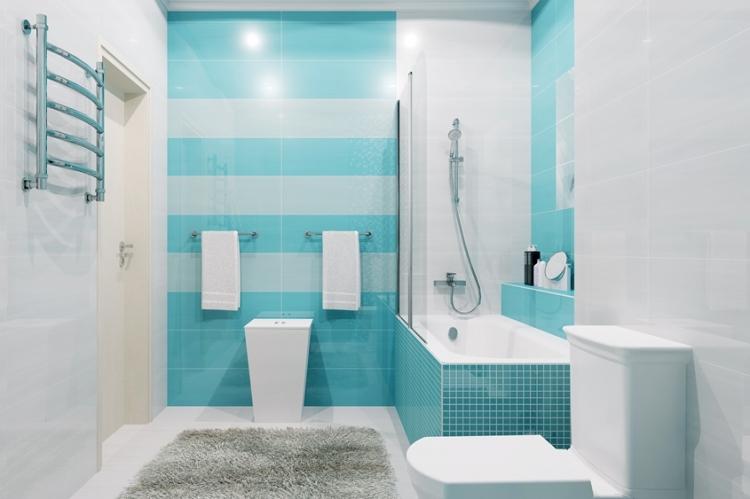
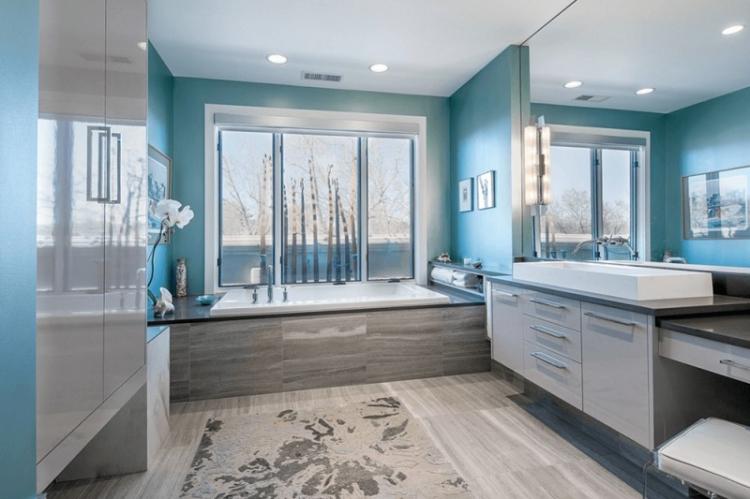
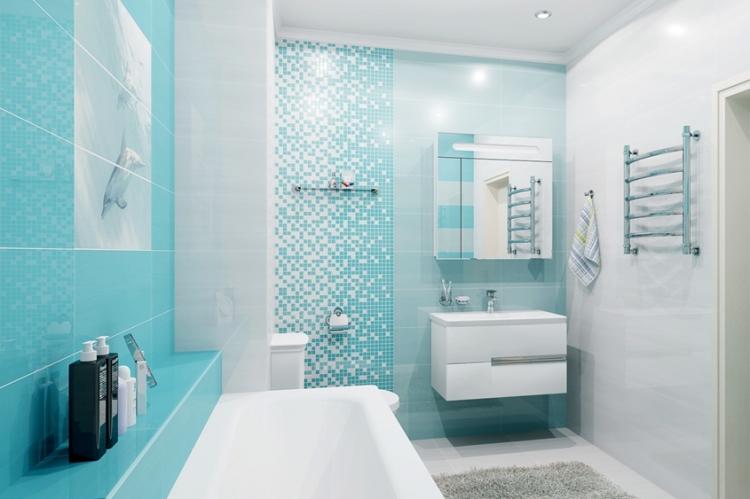
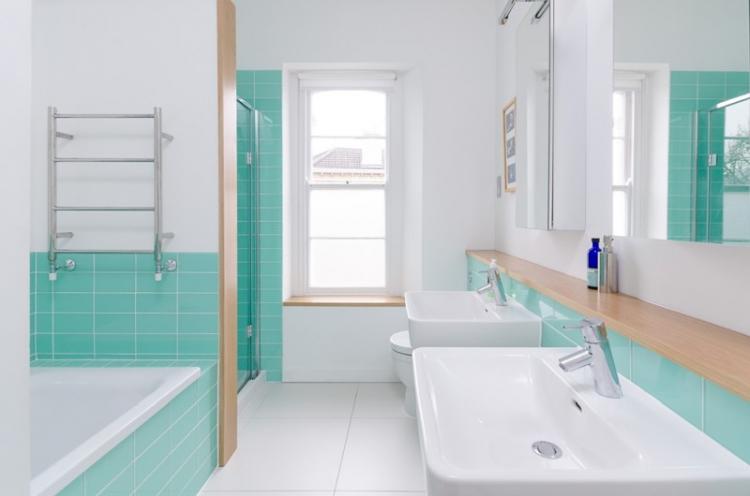
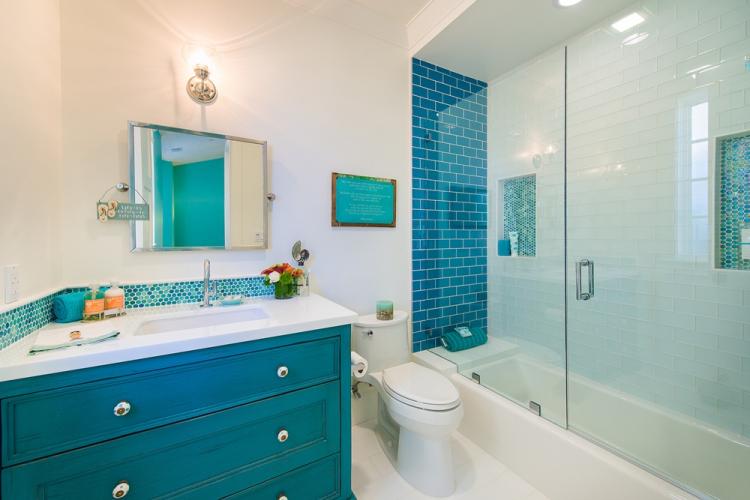

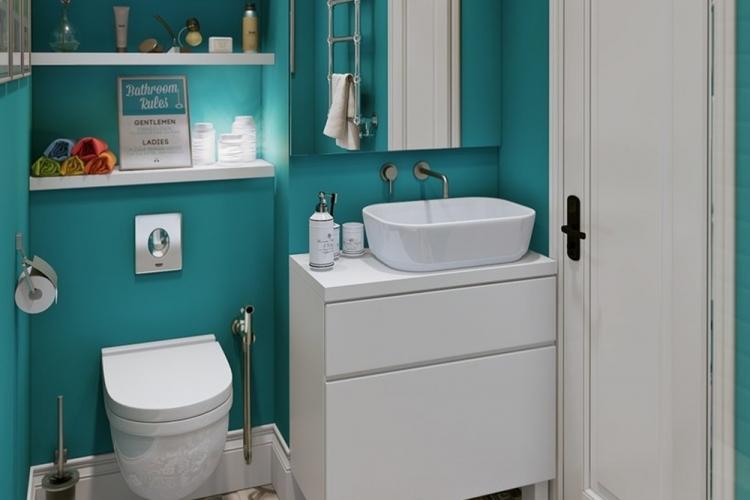
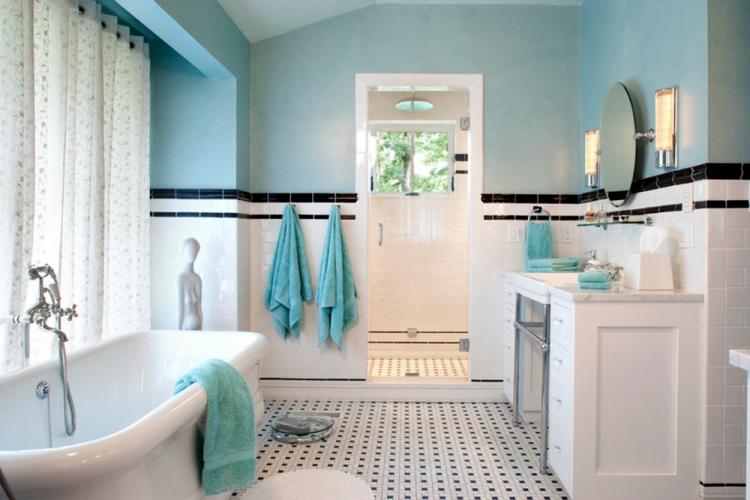
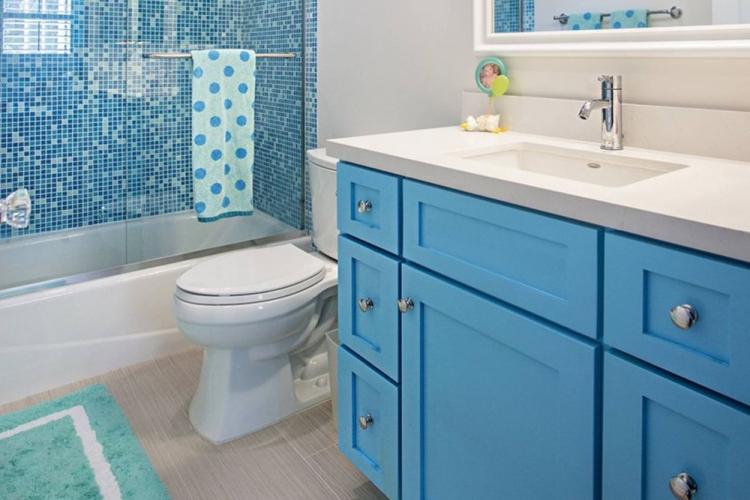
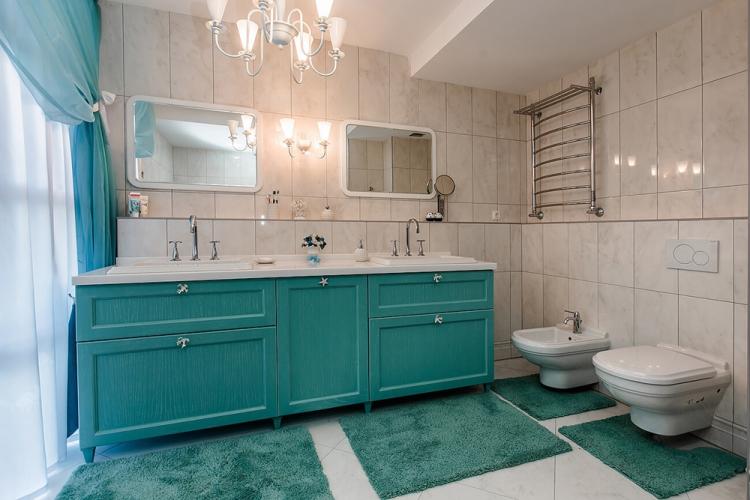
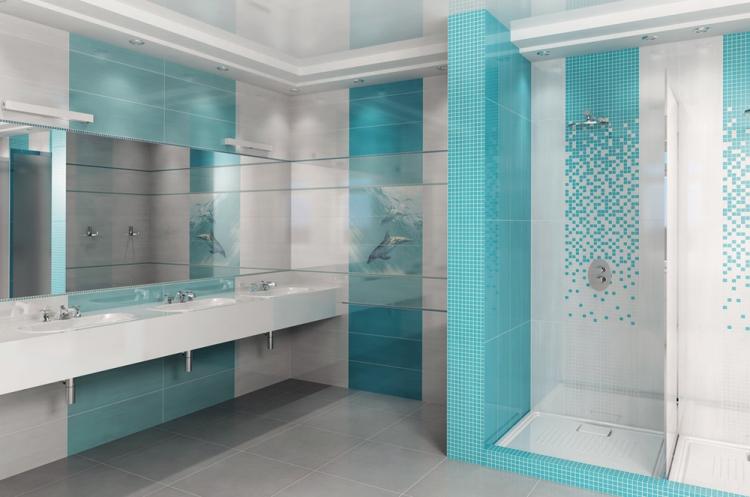
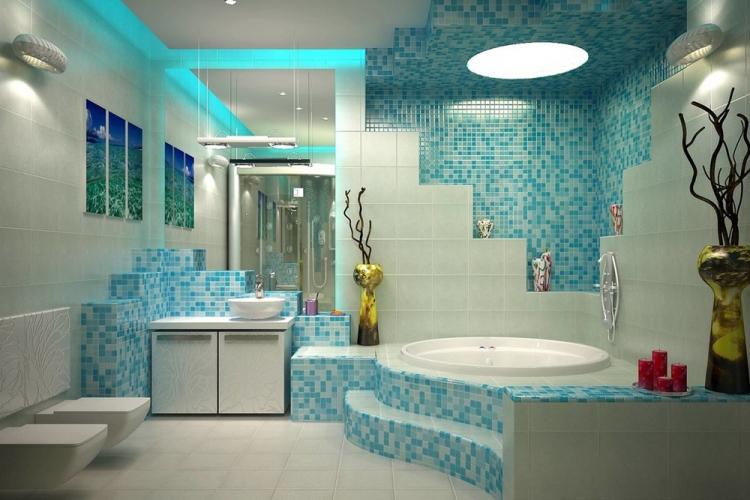
Turquoise color in the interior of the hallway
Hallway decoration is one of the most difficult design tasks, because it is the hallmark of an apartment. The turquoise color is combined with most light shades, which visually increase the space. It is not too flashy and not too dark to overload the interior of a small hallway and corridor.
Turquoise next to mirrored surfaces enhances the effect of depth and space. Cool shades make the room feel more airy. This technique makes even a small and cramped hallway in a Khrushchev more cozy and comfortable.
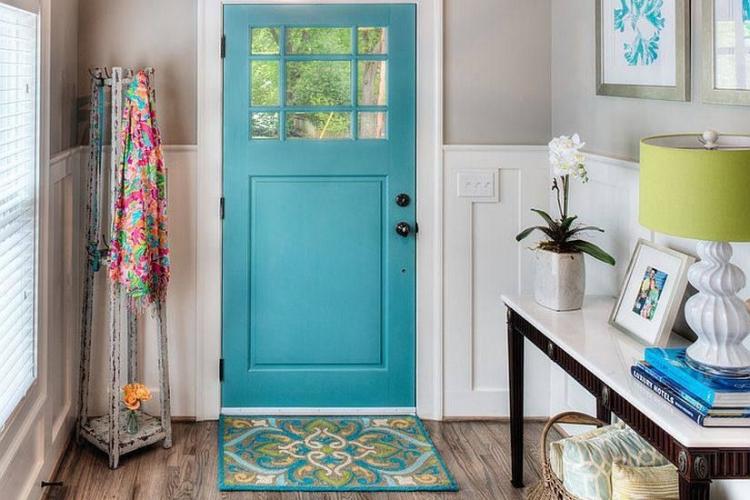
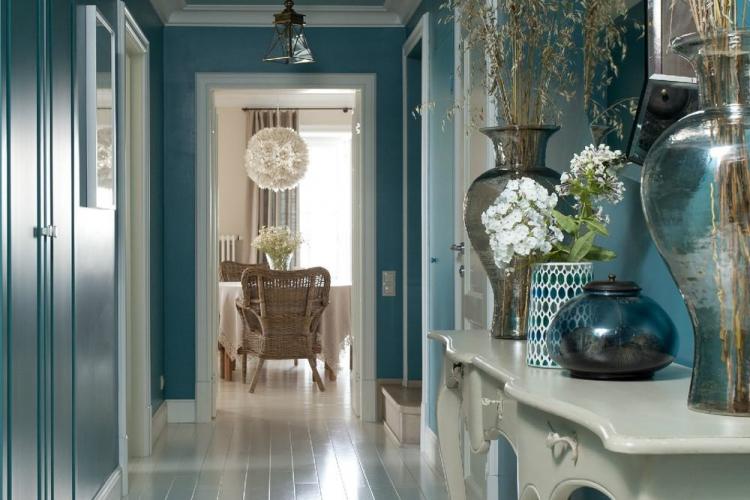
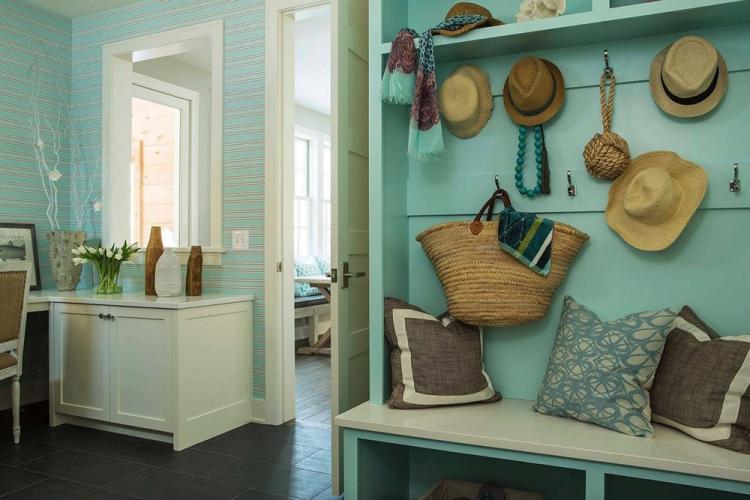
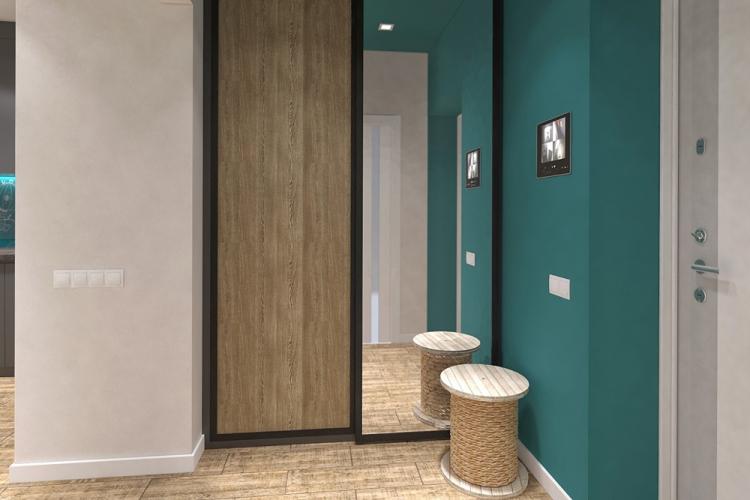
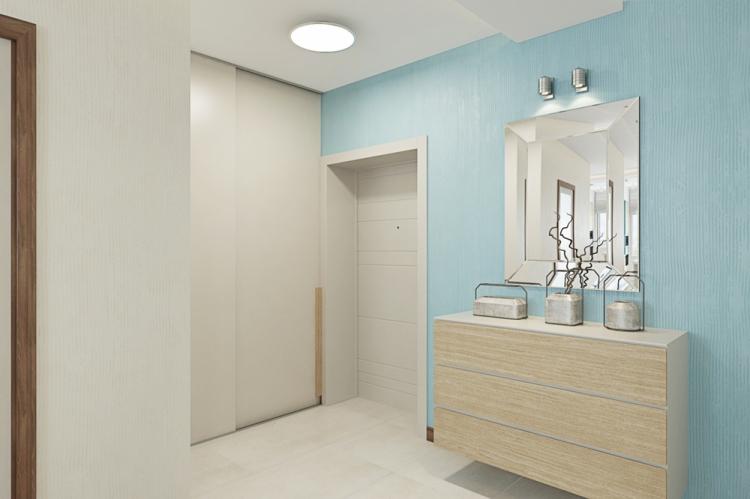
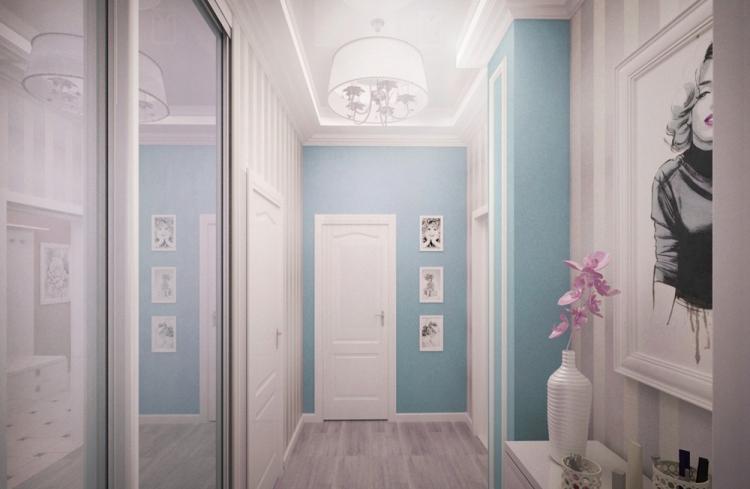
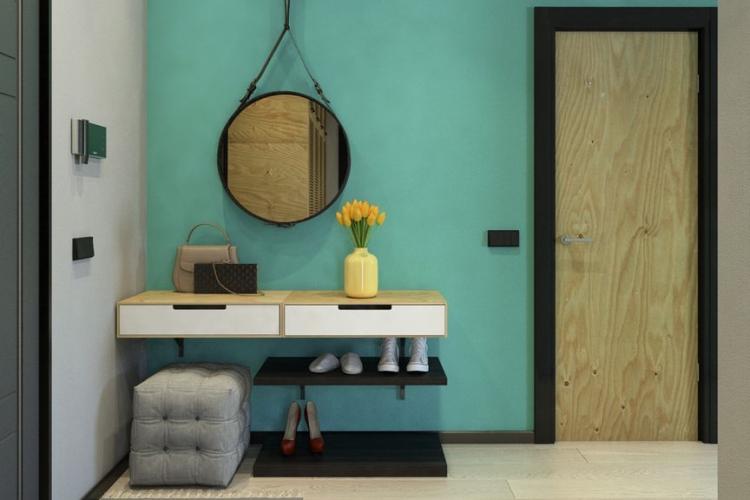
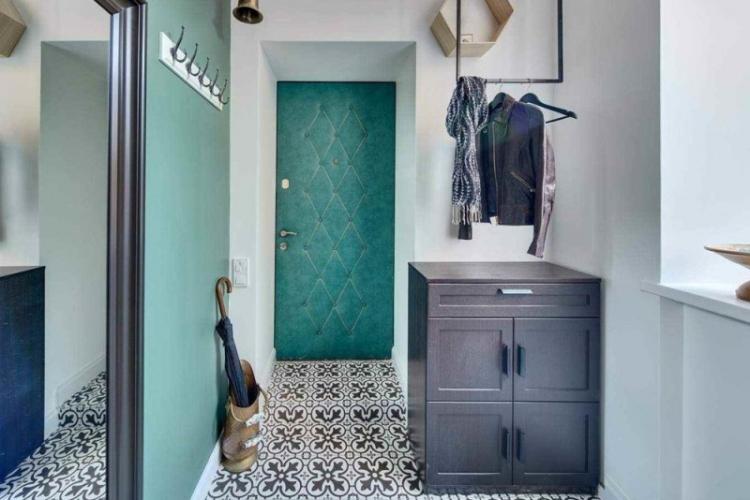

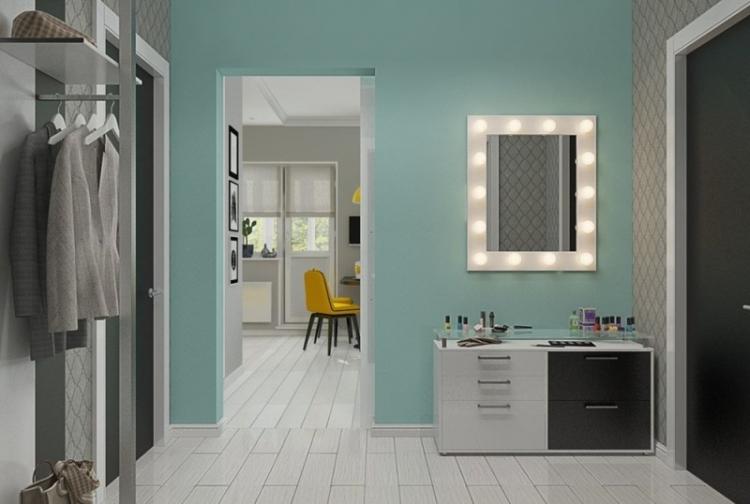
Turquoise color in the children's room
The child's psyche is much more susceptible to external stimuli, including colors. Therefore, in an effort to make the nursery bright and cheerful, it is important not to overdo it.
Turquoise not only combines richness and restraint, but also harmoniously fits into a room for a girl and a boy. With delicate lilac and pink, you can easily get a real princess palace. With black, white and blue - a young sailor's room, and with a decor of shells, stones and greenery - the den of an underwater world lover.
